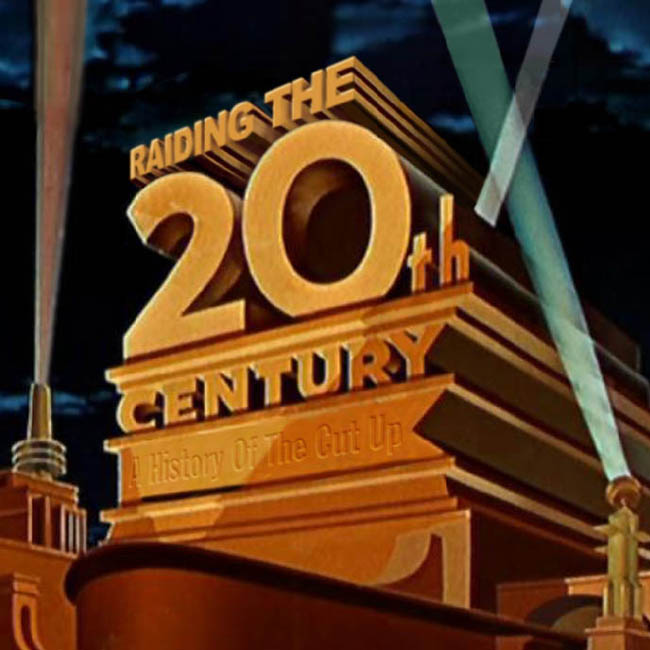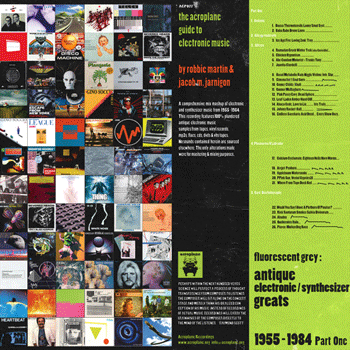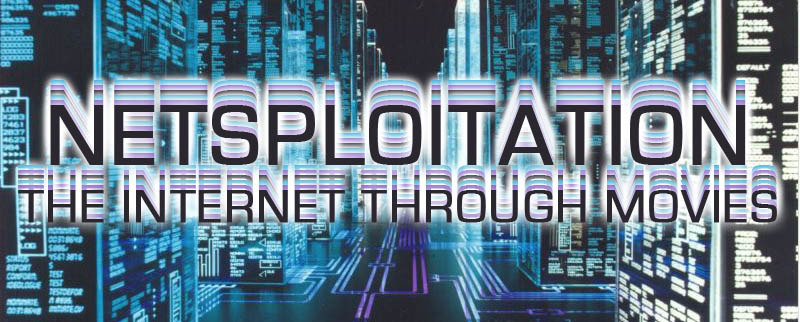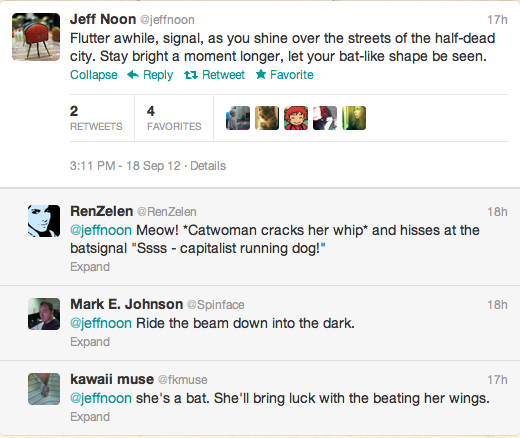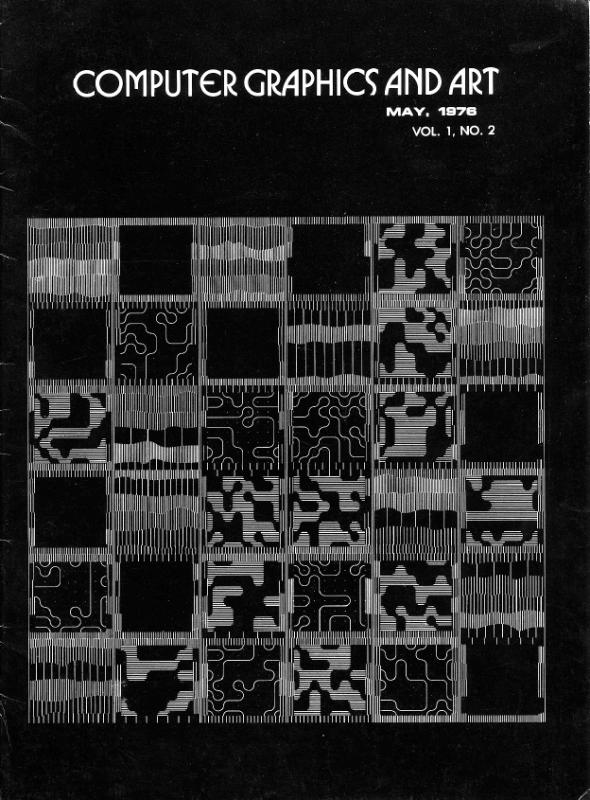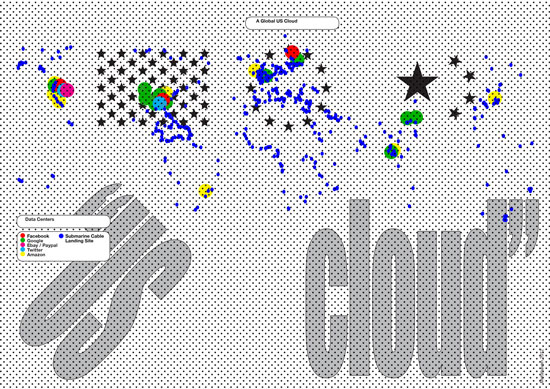![]()
Epic Empires via virginsuicide photography Flickr
"Larp can change the world."
So claimed Heikki Holmås, Norway's newly-appointed Minister for International Development back in March, and I couldn't help but take notice. Three months previous, I was out researching an article on the Collapsonomics movement when the conversation turned to the new direction in which larp players from the Nordic nations were taking the form.
Larp — which you may have encountered already as LARP, acronym of "live action roleplaying", now noun'd down into lower case by regular use — has been around long enough for its public image to settle into an established stereotype, namely nerds dressing up as knights and orcs and hitting each other with rubber swords at the weekend. Like all clichés, it's rooted in truth: a lot of larp is exactly like that — and as such, I'd argue, no more worthy of mockery than paintballing, its over-macho cousin.
But there was, I heard, another type of larp: a larp whose potential as a tool for political and social change inspired Holmås to evangelise about it; a larp that could not only give players an insight into the lived experience of, for instance, homelessness, refugeeism or gender disparity, but which might also suggest changes to the way society deals with people in those situations; a larp that could 'game out' better ways of responding to a Haiti-scale natural disaster, or help the two sides of an interminable religiopolitical stalemate to walk a few yards in the shoes of their opponents.
I scribbled some notes, went home and started digging.
A brief history of larp
Larp's roots run deeper than Dungeons & Dragons.
In her book Leaving Mundania, Lizzie Stark traces the development of larp from its origins, the nascent form of what Bruce Sterling likes to call the military-entertainment complex: immersive historical pageants thrown by medieval royalty, often at immense expense; prototypical wargames for training the officers of the European enlightenment; contemporary historical re-enactment groups, some simply restaging the great battles of the past, or — in the case of the Society for Creative Anachronism — doing what they call 'living history', where old skills and ways of life are revived as part performance, part play, all wrapped up in authentic period costumes.
Wargaming systems of a more realist (or at least mimetic) type were a popular pastime for well-to-do Victorian folk, but it took a man named Dave Wesley form Minneapolis-St. Paul, frustrated with the way that the wargames he played in would break down into arguments over the implementation of the rules, to investigate the theory of games with an aim to developing non-zero-sum scenarios. The first run of Braunstein, a Napoleonic battle rendered with miniature soldiers on a tabletop landscape, ended in intrigue and chaos, with Wesley feeling he'd failed. "His players disagreed, and begged him to run another session," says Stark, so he did.
Braunstein attracted others, including one Dave Arneson, who'd go on to combine his wargaming jones with his Lord Of The Rings obsession to build a new set of rules, developed in collaboration with a thirty-something insurance underwriter named Gary Gygax; the first edition of Dungeons & Dragons, the ur-RPG, hit shelves in 1974.
Leaving the tabletop
![]()
COLD LARP'N - LONDON via jaredeberhardt Flickr
Larp was less born than seeded, however. Says Stark, "there is no single 'mother larp' that started the craze; instead it rose up like some grassroots political campaign, with people in different areas of the United States and elsewhere spontaneously deciding to hit their friends with padded sticks in backyards."
There's a possible Patient Zero in the imaginary planet of Atzor, an early proto-larp described in a Life article in 1941 which at the time of writing boasted ten 'lands' or countries wherein conflicts were decided with tabletop wargames of vast and involving complexity. But it's Brian Wiese's 'Hobbit War' of 1977 that represents the likely apotheosis of 'boffer' larp, familiar from the pop-cultural stereotype: Ren Fair rejects, running around in the woods with padded weapons.
Tolkienian secondary-world fantasy is no longer the only aesthetic in town, however: dystopian near-futures (with varying levels of cyberpunkiness pumped into the main mix), slipstreamish alternate histories and Moorcockian multiverses also abound.
The degree of determinism to the gameplay varies wildly, as do the player goals: from get-the-loot-and-kill-the-baddies to more abstract or intangible accomplishments, such as acquiring secret knowledge or building a network of spies. This movement away from both the tabletop and the rubber weapon was amplified by the huge popularity of White Wolf Publishing's Vampire: The Masquerade roleplaying system and its expansions, which stripped tabletop play down to raw simplicity while (re)introducing the critters-of-the-night tropes which now dominate the nebulous 'urban fantasy' fiction genre, and may well have played a large part in priming its audience. (The White Wolf gameworld was also an early staging ground for another of network culture's oddest performative/theatrical subcultures, the furries, who found in it a safe space to explore their supposed 'species dysphoria'.)
Modern larps might be played in person in the interstitial corridors of a gaming or sci-fi convention, or online via bulletin boards and forums, or both. Games may be mere hours long, or even shorter, like the bite-sized quarter-hour 'roleplaying poems'; some games may persist for years.
What they hold in common is their escapist intent: larp is supposed to be fun, a holiday from more mundane concerns, entertainment.
It's just a game.
Nordic Larp
"Many Nordic larps seem to be about trying out a certain mindset or exploring an emotion, rather than saving a town from orcs or finding enough loot to buy a sweet magic item." — Lizzie Stark
Some time close to the culture-warping strange attractor of the Millennium, however, larp underwent a development fork.
The first Knutepunkt conference of 1997, held in Oslo, was an early step in the formation of the Nordic larp identity. As the conference hopped from nation to Nordic nation on a yearly basis (each time relocalising its name into the language of the host country), it brought together game designers and players interested in transcending mere entertainment, in raising larp to the level of art.
First played in 1998, Ground Zero has a good claim to ur-game status, and is a great example of the 'un-fun' ideas that Nordic larp plays with: its players sat in a room standing in for an Ohio nuclear shelter circa the Cuban Missile Crisis, listening to mocked-up radio reports of a blossoming bout of Mutually Assured Destruction, then spent the rest of the game having their characters come to terms with the annihilation of the world outside. Far from being an outlier, the deep emotional implications of Ground Zero are indicative of the psychological spaces that Nordic larp would go on to explore.
For the sake of simplicity, I'll be following Stark's lead and using 'Nordic larp' to refer specifically to the avant-garde school of gameplay rather than the geographically-defined set of players. As Stark is careful to point out, larp in the Nordic countries is not a monolith so much as a collection of localised scenes, and the Knudepunkt circuit — despite its greater visibility to outsiders — is a marginal part of the greater whole.
Marginal it may be, but Nordic larp is a teeming ecosystem of styles and approaches which, again, mirrors the confusion of subgenres and styles to be found in the contemporary genre fiction scene.
For instance, medieval-esque fantasy isn't completely off the menu. Paralleling the recent rehabilitation of epic fantasy fiction, some Nordic scenesters are returning to the massively-multiplayer orcs-in-the-woods format with historio-mythical accuracy on their minds: Täällä Kirjokannen alla sought to give Tolkienian cliché the boot, and provide all the rompy fun of a trad boffer game with an authentic backdrop based on Finnish mythology. Indeed, the examination of national identity seems to be a popular project for Nordic larp as it spreads southward into Europe; in Poland, a game called Dzikie Pola began in the early Noughties, overlaying the lives of its players with an alternate reality in which they were noblemen from the Sarmatian Period.
Another obsession shared by Nordic larp with contemporary science fiction — and, not coincidentally, with pop culture in general — is the near-future or alt-history dystopia. Some of these games are huge productions, with days of gameplay following weeks of planning and set-construction; System Danmarc, for instance, took over a city-centre park, surrounding it with fences and filling it with shipping-container housing for the stratified underclass factions of its player-characters.
Many of these games involve a simple sort of imaginative play: one may be pretending to be another person, but that person is recognisably human, and interacts with a recognisably human imaginary world in familiar ways, despite the shifted context in which their actions take place. But not all Nordic larps bear such a clear resemblance to the mainstream forms of the game, or indeed such a mimetic resemblance to consensus reality. The Nordic methodology — which often includes a preliminary 'workshop' wherein the players are prepared for the game, perhaps with a discussion of history or politics pertinent to the larp in question, and a 'debriefing' that seeks to integrate the game experience and cushion the come-down of returning to reality — allows for set-ups and scenarios that reframe the human experience in dramatically powerful contexts.
Designed by the Nordic scene's uber-academic Emma Wieslander, Mellan himmel och hav ("Between Heaven and Sea", 2004) ambitiously concretised elements of feminist theory in order to explore disparity and gender roles. On joining the game, Stark explains, players were no longer male or female, but "morning people and evening people. Evening people wore red and yellow, concerned themselves with philosophy and decision making, and served as the objects of the sexual gaze. Morning people wore blue and green, served as the sexual initiators, and were resp for practical arrangements and implementing the decisions of the evening people. In-game, marriage was not between two people, but among four — two morning and two evening people, who mated for life."
Other larps have attempted to bridge the divide with experimental and participatory theatre, or explore situations originally presented in literature — there was a larp based on de Sade's 120 Days In Sodom, for instance. Even the mechanics of play are not sacred, with a considerable degree of experimentation into ways of abstracting character interactions which might be dangerous.
Nordic larp, then, is not easily encapsulated, though there are underlying commonalities. One thing that becomes clear early on is the doctrine of subjectivity: due to the nature of the larp experience, it is impossible to report on what a game was like from any perspective other than one's own. As such, post-game papers and reports tend to focus on design and theory rather than assessments of success or failure, or attempts to reproduce the narrative on the page; as Dave Wesley discovered with the earliest runs of Braunstein, a game might be a complete flop in the eyes of its designers while the players are having the time of their lives.
This was the experience of the gamewrights behind Valokaari, a near-future war scenario; they failed to engineer the expectations of the players — failed to assert the genre and tropes of the game before it began, if you like — and lost control of the narrative as they'd planned it. The players had a blast, however, and with the breezy insight that seems typical to Nordic gamewrights, this was viewed as a valuable lesson rather than a waste of time:
"[E]nvision you are running an Ally McBeal larp and then realize your players have chosen to play it like Law & Order. The subject matter of 'law' remains, but emphasis is very different," explains J. Tuomas Harviainen in an essay about the game Valokaari for the anthology States of Play: Nordic Larp Around the World.
Larp as Art
It seems to me that almost all artforms undergo an developmental curve which starts in pure entertainment and/or escapism before arching upward (or downward, depending on one's position relative to the axes) as the canon, loaming beneath its own accreted density, becomes an ecosystem able to support theorists, metacritical practices and experimental methodologies.
A similar curve is reiterated in microcosm within art genres: witness, for example, the slow development of science fiction from pulpy romps for Competent Men to its current status, that of a genre with its own canon, critical vocabulary and — perhaps most importantly — its own vanguards of theory and praxis.
It is important to note, however, that the pulpy end of the genre has not only survived but remained largely dominant in terms of sales, and also indirectly supports the avant-garde by providing an economic base for the industry: as regrettable as the posthumous eking out of Robert Jordan's bloated Wheel Of Time series may seem to those of us who have read widely enough to recognise it as derivative, its gangbuster sales figures allow Tor to continue taking chances on new or lesser-known writers, some of whom may be pushing the form to new places.
Although that economic connection doesn't pertain (or so I assume), the development of 'literary' and avant-garde praxis and theory within science fiction and fantasy provides a useful analogy for the development of Nordic larp.
The academics, artists and players of the Nordic scene refer to more generic games as 'mainstream' larp, reserving the 'Nordic' soubriquet for their own experiments with the form. Implicit here is the claim that their Nordic larp is capital-letter Art, while the other stuff — as Capote is alleged to have said of Kerouac's work — is "just typing".
(One might compare and contrast this reframing with sf's snooty dismissal of mimetic fiction as 'mainstream' or 'mundane'... and, indeed, with the sf avant-garde's dismissal of the popular mass of push-button tropes and cliches which lurks beneath the bell-curve as 'skiffy' or 'pulp'.)
Pulp vs. lit
"The Nordic scene is proof that fun is not a necessary or essential component of larp, proof that the hobby can sustain high-art aspirations." —Lizzie Stark
In the course of her investigations, Stark has played a variety of larps, from big-business Stateside boffers like Knight Realms to mind-bending art-school Nordic oddities. I was curious to know whether the characters she'd played were persistent, lingering in the mind long after the game was done, or whether it was more of an episodic shrugging on and off of character-as-costume, something more like the experience of a bit-part actor.
For Stark, larp is predominantly "a mode of personal discovery, a way of investigating my own psyche; the character I play is an internal manifestation of my own personality". This ties in with the literary outlook of her own academic background, perhaps; what Stark enjoys about larp is that hard-to-define "art experience", the kick of inner enlightenment she recalls first encountering while reading Woolf's The Waves: "it was like [Woolf] was explaining things about me to myself".
Not everyone plays this way, though. Boffer players tend toward a 'compartmentalised' approach to character, wherein the disconnect between the player's identity and the character's is more pronounced. In Leaving Mundania, Stark discusses a handful of larpers who deliberately step into personalities very different to their own when playing. For some, this is perhaps for the thrill of being able to commit illicit acts in a space where the consequences of those acts won't cause any real harm, much like a computerised war sim; still others seem to use their characters as a safe space in which to come to terms with traumatic experiences from their real lives, to walk in the shoes of others for a little while.
Given Stark's background, her metaphor — that boffer is to Nordic larp what genre fiction is to literature — makes a certain rough'n'ready sense. But the distinction is a little invidious: 'literature' is a moving target, after all, and there is a spectrum of literariness within almost every genre of any maturity.
Hence I'd modify Stark's terminology by swapping out 'genre' for 'pulp'; the latter, I feel, more fairly captures the exuberant disregard for high-art values and favouring of escapism and fun which characterise both boffer larp and popular/populist genre fiction, and makes of larp's various forms a contiguous spectrum rather than a binary split.
The highly influential larp Mellan himmel och hav, for instance, has all the hallmarks of science fiction's more literary aspirations — unsurprising, given it drew on the works of Ursula K Le Guin, who is many things, but no writer of pulp. The commercially successful Stateside boffer campaign Knight Realms, by contrast, is pure pulp adventure: a cosplay theme park that convenes periodically to embody the generic Extruded Fantasy Product familiar from Terry Brooks's interminable Shannara franchise.
We can turn to literary criticism for a yet more useful analogy. E M Forster's Aspects of the Novel was a core text of the modernist literary project, and while much of what it proclaimed as duty is now questioned as dogma, it contains some distinctions that remain useful. The one that applies here is the 'flat character'/'rounded character' dichotomy: flat characters are predominantly defined by a single trait, which makes them "memorable, predictable and pure" [Koch 2003, p95], while round characters have a "want or need that makes them capable of change" [ibid, p96].
The flat character is a staple of the sitcom, the episodic serial: "[s]ince they are incapable of change, flat characters can go on and on and on, having an endless sequence of adventures." [ibid, p95] The round character is, at least in part, one of the concepts hiding behind the shibboleth of literature; their changes of nature as they progress through the story are what critics mean when they talk about 'character-driven' fiction.
Forster's dichotomy is often framed as a value judgement (round = literature = Nordic = good; flat = genre = boffer = bad), but that judgement inheres more within the critical canon than Forster's original formulation. If we think of flatness and roundness as different narrative strategies, the split becomes complementary instead of antagonistic: flat characters are ideal to escape into, avatars for enjoyable fictional journeys wherein the exterior is privileged and foregrounded; rounded characters, by contrast, focus the narrative on the interior, forcing the reader to engage with events at a more personal level, privileging philosophy and contemplation over escapism and fun.
Despite favouring the elitist aesthetic a literature over the rompy fun of pulp, I don't believe either is inherently better than the other; they are too different to bear the weight of that comparison, as are their larp equivalents
But in the next instalment, I'll argue that Nordic larp has a socially disruptive potential that makes it the more interesting end of the scene, while marking it as both an artform native to contemporary network culture and a new experimental praxis in narrative theory...


